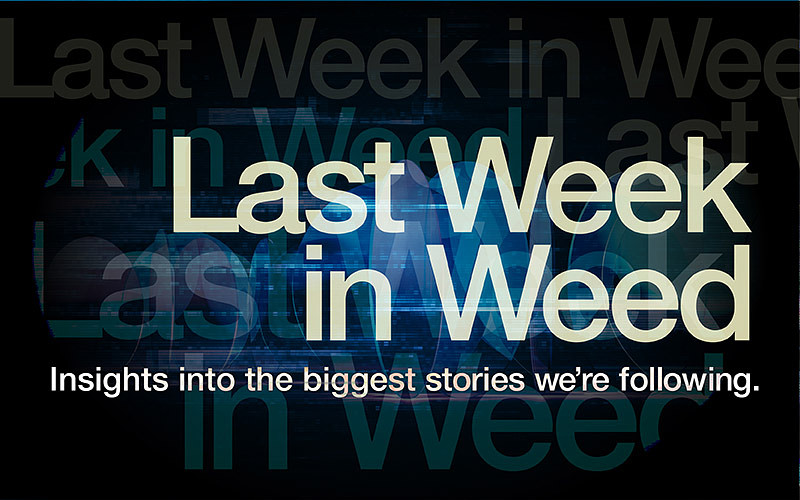One of the biggest questions when talking about cannabis is when will the United States legalize it? Will it ever happen? The short answer is yes, it’s coming. But when? To help others understand when legalization will arrive, I decided to create “the Cannabis Clock.”
The Cannabis Clock is modeled after the Doomsday Clock. The scientists who worked on the Manhattan Project (which invented the atomic bomb used to end World War II), created the Doomsday Clock in 1947 to illustrate how close humanity is to Armageddon, or total annihilation from dangerous manmade technologies. Armageddon is midnight on the Doomsday Clock. Currently, humanity is 100 seconds to midnight.
Set Your Watches
The Cannabis Clock, like the Doomsday Clock, will help show people how close the United States is to midnight, a.k.a. federal legalization. You’re probably asking yourself, “Well, what time is it right now?” As of August 4, 2022, the Cannabis Clock is set at 11:53 PM, seven minutes to midnight.
Ironically, that is the same exact time the Doomsday Clock was started back in 1947.
(I swear the original time of the Doomsday Clock was not known when deciding what time the Cannabis Clock would start.) When deciding what time it is with the Cannabis Clock, three focus points will be considered: forward progress, backward motion, and economic impact.
Forward Progress
As cannabis legalization gets closer and closer, policy related to it becomes more complex. The first state to pass cannabis policy was California in 1996 with the Compassionate-Use Act, establishing the first medical cannabis state. Since then, 37 states have passed medical cannabis policy, as well as D.C. and three territories: Guam, Puerto Rico, and the United States Virgin Islands. Colorado was the first state to pass an adult-use cannabis policy.
Since then, 19 states and two other territories, Guam and the Northern Mariana Islands, followed suit.
The federal government will closely examine effective cannabis legislation throughout the country to form its cannabis policy. That’s why it is important to focus on the best of the laws and get rid of the worst. For instance, New York State was the first in the country to
enact an adult-use cannabis
policy allowing people to consume cannabis anywhere
they can consume tobacco. This is the kind of policy needed at the federal level.
When politicians create policy, especially around cannabis, they generally look to the demands of their constituents. The U.S. approval rating for cannabis has never been higher. Currently, eight out of 10 Americans believe medical cannabis is a good thing. Over 60% of the population believes adult-use should be legalized. More than 75% of Americans believe people should not be put in jail for a cannabis offense. Now that’s progress!
Backward Motion
Sometimes, new policies are enacted that actually push the cannabis industry backward. In 2019, every 58 seconds in the United States someone was arrested for a cannabis offense. That comes out to 545,601 cannabis arrests in just one year! Of those arrested, 92% were for cannabis possession. Viewing cannabis possession as a criminal offense has everything to do with it being a Schedule 1 drug. As long as cannabis is considered a scheduled substance, people will be criminalized for it.
Several industries and groups can have a negative influence on the cannabis space as well. For example, the Coalition for Cannabis Education and Regulation tries to influence the federal government to shape cannabis policy and infrastructure in a way that would benefit its founders.
Some of the biggest members of this coalition include Altria (Philip Morris), Constellation Brands (Corona), and Molson Coors (Coors and Miller beers), just to name a few. The fossil fuel industry also has ulterior motives for hemp regulation, as hemp alternatives threaten the popularity and proliferation of plastic.
The private prison system, which houses 8% of the prison population, also dislikes cannabis legalization. Legal cannabis means a lot less people will be going to jail. Fewer prisoners means fewer jails, so private prisons would make less money.
Did you know the Automobile Association of America (AAA) lobbies against cannabis on the local, state, and federal level? When you see an article referencing some type of driving and cannabis study, it was likely paid for by AAA to hinder the progress and growth of the cannabis industry.
Economic Impact
One of the biggest considerations for when cannabis will be federally legalized is the economic factor. As more states legalize, new jobs are created. The cannabis industry is the fastest growing job sector in America. Currently there are around 520,000 legal cannabis jobs in America. That’s almost 100,000 more than a year ago. It is projected that by 2026 there will be over 800,000 legal jobs in cannabis.
There’s also the economic impact of selling legal cannabis. In 2021, the global marketplace sold $25 billion in legal cannabis. It is projected that by the end of 2022 that number will rise to $33 billion, and by 2026 it will be $52 billion.
Let’s do a comparison with another industry and cannabis to see how they stack up. For this comparison we’ll be looking at 11 states that have passed adult-use cannabis and the tax revenue generated between the cannabis industry and the alcohol industry in those 11 states. Drum roll please … in those 11 states in 2021, the alcohol industry generated $2.4 billion in tax revenue. In the same 11 states, the cannabis industry generated $2.9 billion in tax revenue. That’s almost 20% more than alcohol.
Counting the Minutes
All of these factors played into the determination that the Cannabis Clock currently sits at 11:53 PM, seven minutes to midnight. However, this time will change quickly because of how fast things change in the cannabis space. Who knows, from the time this article was written to the time you’re reading it, we may have moved forward five minutes, or backward five minutes. I suppose we will all be counting the minutes to find out.
Author
-

Cannabis & Tech Today is the premier publication for inspiring business profiles, exclusive interviews with thought leaders in the field, science innovations, and insights on new legislation and growth in the cannabis market.






